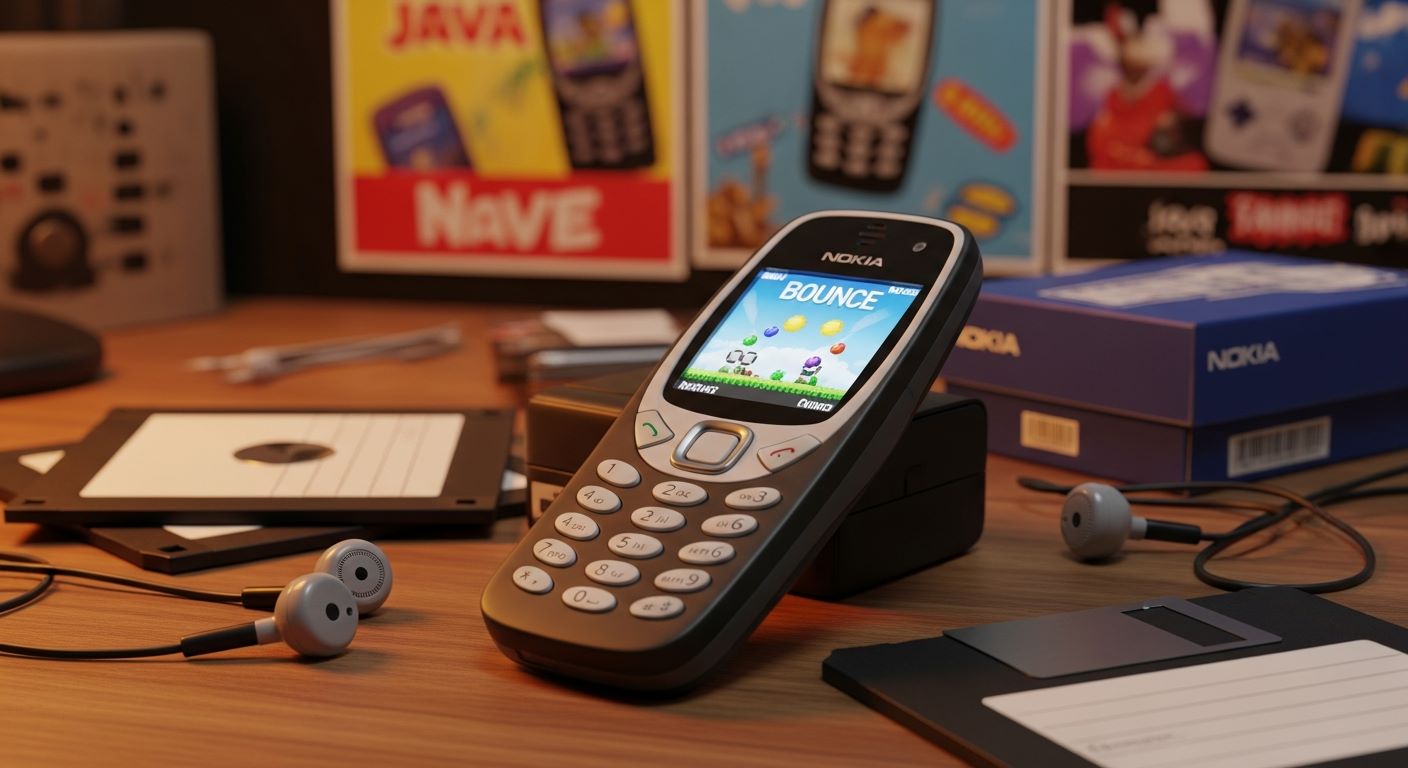The Rise of Java Games: How Bounce Started It All
In the early 2000s, mobile gaming underwent a revolutionary transformation . Before Java ME (Micro Edition) arrived in 2001, mobile phones were limited to basic WAP (Wireless Application Protocol) games with slow data transfers and minimal graphics . But one game changed everything: Bounce, developed by Gameloft, became the catalyst for modern mobile gaming .
The Java Revolution That Changed Gaming Forever
Java ME brought unprecedented possibilities to mobile phones, marking a pivotal moment in gaming history . At the 2001 JavaOne conference in San Francisco, developers witnessed Sonic the Hedgehog moving faster on mobile devices than ever before—proof that J2ME could deliver console-quality experiences . This technology enabled:
- Full-color graphics with smooth animations
- Polyphonic sound effects and background music
- Complex gameplay mechanics with physics engines
- Multi-level progression systems with save states
- Cross-platform compatibility across multiple phone brands
The multiplatform nature of Java games meant developers could reach audiences on Nokia, Sony Ericsson, Siemens, and other manufacturers . By the mid-2000s, Java gaming had become accessible to millions, with games spreading through IR ports, Bluetooth transfers, and expensive SMS downloads .
Bounce: The Game That Started the Mobile Gaming Revolution
Gameloft's Bounce wasn't just another mobile game—it was a masterpiece that proved handheld devices could deliver engaging, console-quality experiences . Released in 2000 as one of the earliest J2ME titles, Bounce featured:
- Precision-based physics gameplay requiring timing and strategy
- Progressive difficulty curves across 11 challenging levels
- Innovative mechanics including bouncing, rolling, and obstacle avoidance
- Addictive replayability with high score tracking
- Compact file size optimized for limited phone memory
Players controlled a red ball navigating through dangerous environments, collecting rings, and avoiding spikes—mechanics that would influence mobile gaming for decades . The game's success demonstrated that mobile phones weren't just communication devices; they were legitimate gaming platforms .
The Golden Era of Java Mobile Gaming
The period between 2001 and 2010 became known as the "Golden Zeros" for Java gaming . For young people who couldn't afford computers or PlayStation consoles, mobile phones offered accessible entertainment at a fraction of the cost . The Java gaming ecosystem flourished with:
- Major studio involvement: Companies like Activision and Ubisoft launched mobile divisions
- Third-party developer communities: Independent creators built mods and custom versions
- Magazine and TV advertising: Catalogs promoted games through expensive SMS purchases
- Social gaming culture: Players shared games via Bluetooth and infrared connections
- Platform diversity: Games ran on both smartphones and feature phones
You can explore thousands of preserved Java games at the Internet Archive's mobile games collection . Learn more about game development fundamentals if you're interested in creating your own mobile experiences today .
The Impact on Modern Mobile Gaming Industry
Bounce and Java games collectively proved that mobile phones could deliver console-quality gaming experiences worth paying for . This validation transformed the industry and established patterns still visible today:
- Free-to-play models: Many Java games pioneered demo versions with paid full unlocks
- Physics-based gameplay: Games like Angry Birds owe their mechanics to Bounce's physics engine
- One-touch controls: Simple control schemes optimized for small screens
- Endless runners: The progression and obstacle-avoidance format lives on in modern titles
- Casual gaming appeal: Accessible gameplay for all skill levels
The retro gaming market continues thriving, valued at $3.8 billion in 2025 with projections reaching $8.5 billion by 2033 . This represents a 10% compound annual growth rate, demonstrating sustained interest in classic gaming experiences .
Cultural Legacy and Lasting Influence
Today, Bounce's influence extends far beyond its original release . Modern games like Flappy Bird, Geometry Dash, and countless physics-based puzzlers inherited Bounce's DNA—proving that simple mechanics, executed with precision, create timeless entertainment .
The game demonstrated three fundamental truths about successful game design: accessibility matters more than complexity, physics-based gameplay creates natural difficulty curves, and mobile platforms deserve the same creative attention as traditional consoles . These principles continue guiding mobile game development in 2025 and beyond.
